Sixty Shades of Red
Next time you're browsing the supermarket
in search of the ingredients for dinner, pause a moment to read the
labels of your favourite red-coloured foods and cosmetics. Chances are,
you'll discover a notation for cochineal, carmine, or carminic acid,
pigments whose origins might surprise and possibly disgust you Cochineal
and its close cousin carmine (also known as carminic acid) are derived
from the crushed carcasses of a beetle.
Cochineal is a scale insect that
feeds on the nopal cactus in arid areas of Mexico, Peru, Chile and the
Canary Islands. These popular colorants, which today are used to impart a
deep red shade to fruit juices, campari, jellies, sweets, shampoos,
lipstick and more, come from the female Dactylopius Coccus, a beetle
that inhabits a type of cactus known as nopal, “tunera” or prickly pear
that can be seen growing in abundance on the island (Cochineal was once a
very important crop here.)
Raw cochineal comes in the form of
silvery-purple dried insects about the size of a large grain of rice.
They look like tiny little scarabs. The best cochineal is dark and full
of carminic acid (a slight squash with the fingers will reveal it.) When
ground and boiled to extract the dyestuff, they yield a beautiful rose
violet to scarlet colour, quite distinctive from cochineal
extract.
Dactylopius Coccus or cochineal was the source of a red dye used
by Aztecs and Mexican Indians for centuries before the arrival of the
Spaniards. Those indigenous peoples would collect cochineal insects,
briefly immerse them in hot water to kill them and dissolve the females'
waxy coating and dry them in the sun. The desiccated insects would then
be ground to a fine powder. The Spaniards immediately grasped the
potential of the pigment and within a few years the armed invaders had
taken over control of the cochineal industry from the locals. The dried
insects became one of the first products to be exported from the New
World to the Old and soon one of the biggest colour exports that the
world has ever seen started up.
Europeans took to the beautiful,
bright scarlet colour immediately, both for its vibrant hue and for its
extraordinary colourfast properties, ensuring that boatloads of
cochineal insects would make the trans-Atlantic trek. In 1575 alone,
about 80 metric tonnes of red arrived in Spain in the form of brown
pellets, on what became known as the cochineal fleet; several trillion
insect bodies arrived every year over the next quarter of a century. The
dyes true nature - crushed beetle- was however one of the worlds best
kept secrets, the widely accepted and encouraged belief being that the
dye came from a berry.
It was a Frenchman in his mid twenties, Nicholas
Joseph Thierry de Menonville who made the most daring raid of the 18th
century on the cochineal fields of Central America and broke the true
story of Cochineal to the world. (And that in itself is a fascinating
adventure story.)
It takes about 70,000 insects to make one pound of
cochineal, it has been used on the robes of kings and cardinals, on the
lips of screen goddesses and on the canvases of great artists, cochineal
is one of the reddest dyes that the natural world has produced.
Today
it has been surpassed as a dye for cloth by a number of synthetic
pigments, but is still widely used as a colouring agent for a number of
foodstuffs, beverages, and cosmetics (because many of those synthetic
dyes proved dangerous to humans when taken internally or allowed to
leach into the body through the skin).

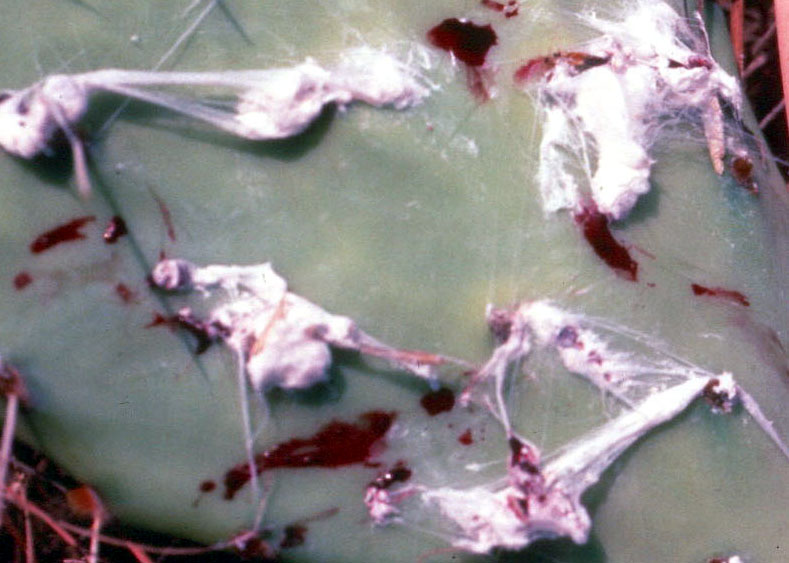

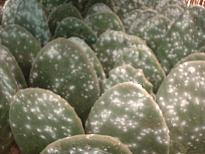
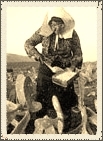
Harvesting the Cochineal
Our distaste at the thought of
ingesting bugs is based on cultural factors rather than the properties
or flavours of the insects themselves; cochineal is a safe food colorant
aside from a few rare cases of allergic reaction, cherry coke is full
of it, it is colour additive E120. In the 21st century we apparently dab
our cheeks with it and it is one of the few approved red constituents
of eyeshadow. While cochineal is used in a wide variety of foods, it is
not found in kosher products because Jewish dietary laws prohibit the
inclusion of insects or their parts in food, neither will you find it
being used to dye Buddhists robes as there is too much death in it.
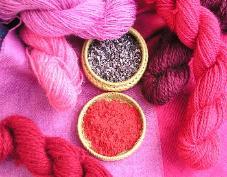
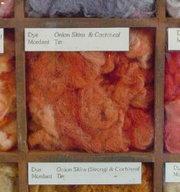
No longer an important crop in the Canaries, 85% of the harvest today is cultivated by Andean villagers, this precious cash crop employing an estimated 400,000 families.